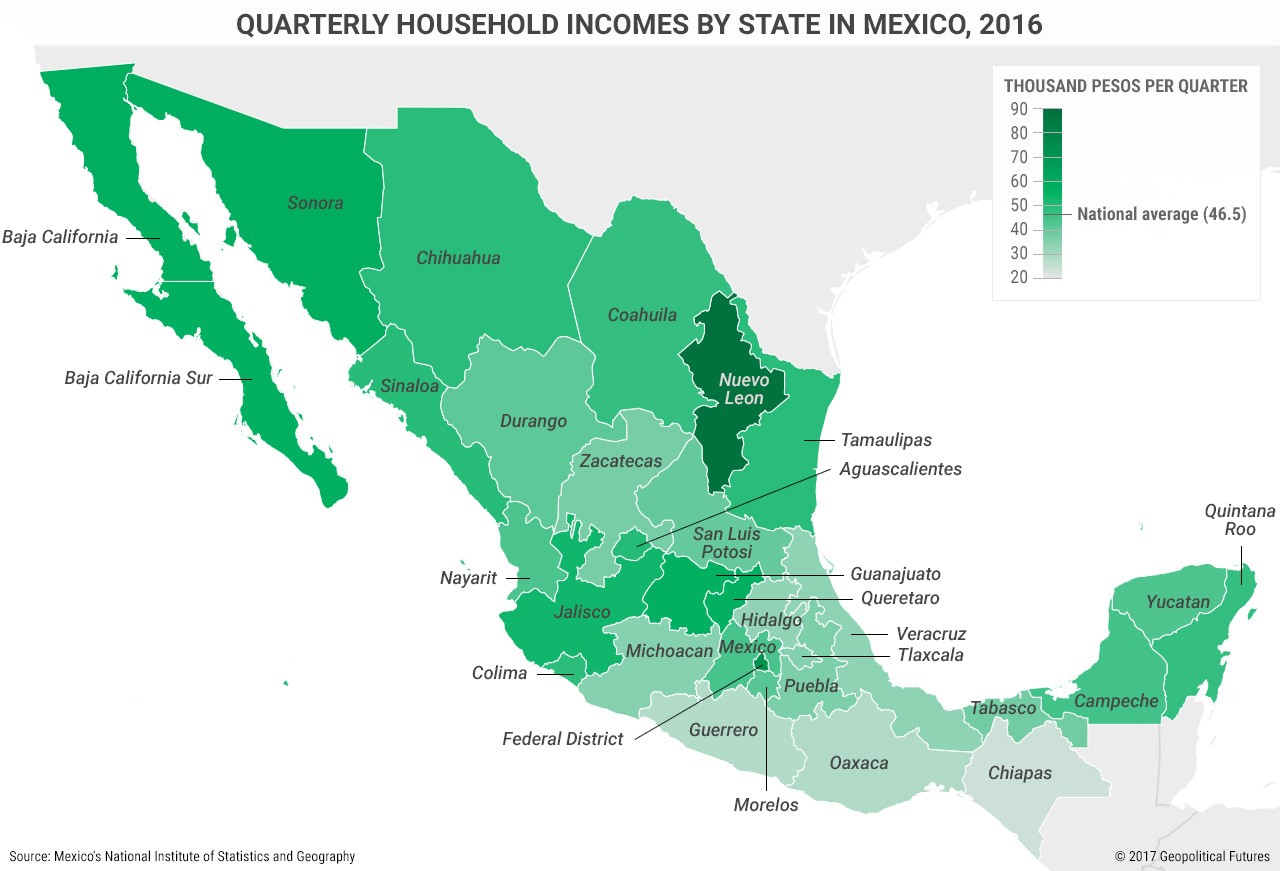Here’s the Real Reason Two Mexicos Exist
- Meredith Friedman
- |
- October 11, 2017
- |
- Comments
By Geopolitical Futures, Mauldin Economics
Mexico is a country with a booming, high-value manufacturing sector and sophisticated business class a booming, high-value manufacturing sector and sophisticated business class. But it’s also a country with extreme poverty and dependence on subsistence farming in some areas.
These extremes gave rise to the phrase “Two Mexicos” —and raise questions about the role of geopolitics in Mexico’s development.
Mexico’s Disparity Originates in Geopolitics
The disparity found within a dual economy is often not a temporary phenomenon or transitional economic phase. It’s an enduring quality born of geopolitics. This holds true for Mexico, too.
The country has struggled with economic inequality since it was a Spanish colony in the 1520s.
After the Mexican revolution and the following reconstruction, Mexican governments more openly acknowledged their country’s discrepancies, enacting policy reforms meant to harmonize the economy’s most important areas: land ownership, social welfare, infrastructure development, and industrial development.
Sometimes these measures were successful, but they never fully reconciled the differences between the Two Mexicos.

The Two Mexicos Are Not Just Economically Divided
There’s also a geographic division.
Central and northern states typically boast more dynamic, advanced economies. Infrastructure networks—roads, electricity, telecommunication, etc.—are well developed and incorporate large portions of the population.
The workforce in these states is generally higher educated, relies on formal employment, and receives comparatively higher wages. Those in poor, southern states have limited access to education, are often informally employed, and are paid lower wages, generally in low-value manufacturing and subsistence farming.
A look at formal employment figures and household incomes shows how the economic activities endemic to each region contribute to economic disparity.
Informal employment in Mexico is high—in August 2017, 56.9% of the workforce held informal jobs. However, the difference in economic activity makes informal employment much more common in the South than it is in the North.
Drastic differences are also observed on the state level. Mexican states along the US border account for nearly a quarter of the country’s GDP.
Powerless Against Geography
One of the reasons the Mexican government has never been able to reconcile the differences between Two Mexicos is that no government can reconcile a country’s geographic features.
The dynamics and disparities observed in the Mexican economy today stem from geopolitical factors that have molded Mexico's economic development. On multiple occasions, developing the central and northern states of Mexico, as opposed to the southern states, was essential to fulfill geopolitical imperatives.
Grab George Friedman's Exclusive eBook, The World Explained in Maps
The World Explained in Maps reveals the panorama of geopolitical landscapes influencing today's governments and global financial systems. Don't miss this chance to prepare for the year ahead with the straight facts about every major country’s and region's current geopolitical climate. You won't find political rhetoric or media hype here.
The World Explained in Maps is an essential guide for every investor as 2017 takes shape. Get your copy now—free!
Read the original article on Geopolitical Futures.
